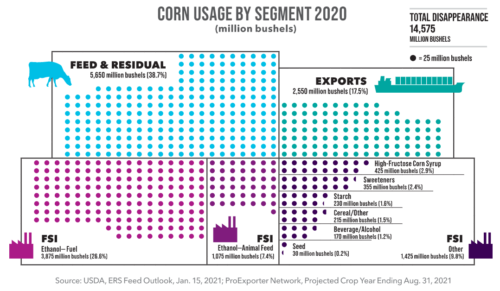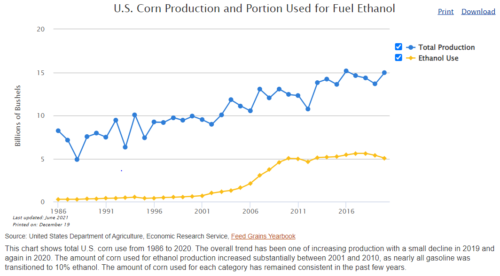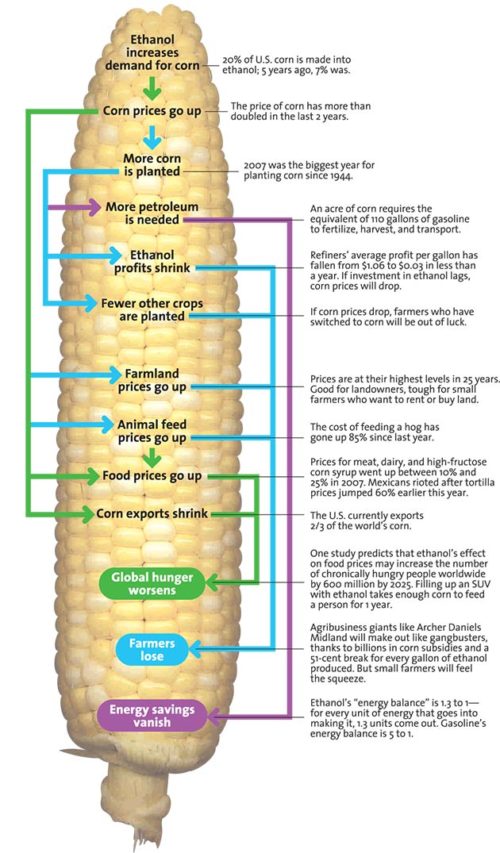Corn for ethanol? Not a good idea.
We grow lots of corn in the U.S.
- Most of it is genetically modified, meaning that the potentially carcinogenic herbicide, glyphosate, gets dumped all over it in enormous quanitities
- 40% of the corn is used to produce ethanol; this provides an incentive to grow corn in places where water is limited or land is poor.
One argument in favor of using corn for ethanol is that using ethanol for fuel reduces climate change.
But recent reports suggest that using corn for ethanol is a net loss for the planet.
- Jessica Fu writes in The Counter. Corn ethanol was supposed to help the climate. Instead, its production may have made things worse: Environmental advocates have long warned that incentivizing ethanol production could be a net loss for the planet. A new study suggests that those fears may be well-founded. Read more
- Virginia Gewin in Civil Eats writes: How Corn Ethanol for Biofuel Fed Climate Change
- C. Jones points out: Iowa is addicted to cornography, but we would all be better off using electric power.
- Dr. Jonathan Foley concludes: It’s Time to Rethink America’s Corn System: As a crop, corn is highly productive, flexible and successful. As a system, the same is not true.
Comment: Growing corn for ethanol is makes no sense at all. It’s bad for land and water. Dumping glyphosate also makes no sense. We need an agricultural policy that promotes agroecology/regenerative agriculture/sustainability, and that promotes the health of everyone involved in production and consumption.






